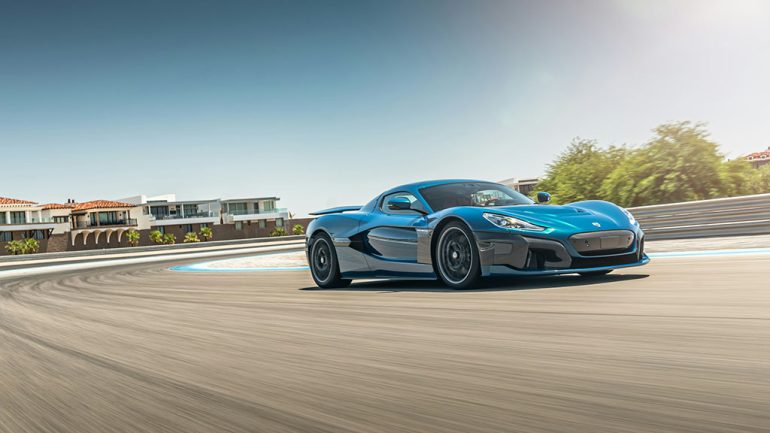Drag Strips and Race Tracks Banning EVs Over Security Considerations Might Be A Rising Pattern : Automotive Addicts
Automotive

Electrical autos (EVs) have earned a repute as a few of the quickest autos on the highway and observe, particularly with fashions just like the Tesla Mannequin S Plaid accelerating from 0 to 60 mph in an astounding 1.9 seconds. Their prompt torque and talent to launch off the road give them a transparent benefit in drag races, and EVs lighting up drag strips has change into a standard sight. However regardless of their reputation, some tracks at the moment are beginning to ban EVs, citing hearth and shock hazards that make it tough to handle these autos safely in high-speed environments.
Willowbank Raceway Bans EVs Over Security Considerations
Willowbank Raceway in Queensland, Australia, just lately introduced that it’s going to now not enable absolutely electrical autos to race or take a look at at its facility. This transfer, as reported by Drive.com.au, was made after an intensive evaluate of security rules and emergency response procedures for EVs. The choice displays rising security issues about EVs within the high-stakes, high-speed setting of motorsports.
“After cautious consideration and investigation, Willowbank Raceway has determined that we will now not enable road-registered Absolutely Electrical Autos to race or take a look at at Willowbank Raceway,” reads the press launch from the observe. “We have now been reviewing the rules from Motorsport Australia, NEDRA, in addition to the emergency response procedures for particular autos and after data offered by these departments, we now have decided that the dangers related to racing and testing Electrical Autos are too excessive.”

The raceway’s ban, which takes fast impact, applies solely to totally electrical autos, not hybrids. Willowbank’s issues are rooted within the particular dangers that EVs pose, comparable to:
- Battery-Associated Hearth Hazards: Broken EV batteries can launch flammable gases and pose a big hearth danger. Not like gasoline fires, that are typically managed with commonplace hearth suppression strategies, EV battery fires typically require massive portions of water or specialised tools that many tracks lack.
- Shock Hazards: EVs run on high-voltage programs, and the observe worries that emergency responders might not have the ability to verify that the car is safely powered off after an accident, placing them vulnerable to shock.
- Inaccessible Doorways: Some EVs, notably Tesla fashions, have retractable door handles that may be difficult to open from the skin. This could pose vital issues in emergencies when rescuers must entry the car.
- “Reside” Autos: Willowbank additionally highlighted issues in regards to the lack of ability to verify if an EV is totally deactivated after a wreck, that means it may probably nonetheless pose a danger to each the driving force and emergency personnel.
Though Willowbank has not skilled any vital EV-related incidents, the observe is prioritizing security, even when which means quickly barring EVs from racing. “When you may have the ability to nitpick the observe’s case for banning EVs, you’ll be able to’t knock ’em for wanting individuals to remain alive,” says Willowbank in its assertion, emphasizing that the choice was made with the well-being of each members and workers in thoughts.
Different Tracks Banning EVs
Willowbank isn’t alone on this method. Over the previous few years, different tracks have applied comparable bans on electrical autos. Summit Level Raceway in West Virginia and Anglesey Circuit in Wales are two different notable tracks which have restricted EV entry, sparking a wider dialog about the way forward for EVs in motorsports.
These tracks are sometimes smaller, grassroots services with out massive workers or the in depth sources to deal with the distinctive challenges of EV security. Whereas bigger, better-equipped tracks might proceed to welcome EVs, many smaller venues might more and more comply with Willowbank’s lead. Banning EVs altogether may change into a development amongst venues that cater to newbie and neighborhood racing because of each monetary and logistical limitations.
The Way forward for EVs on the Monitor
As EVs change into extra well-liked and proceed to push the boundaries of automotive efficiency, the motorsports world will doubtless must adapt. Some bigger racing organizations {and professional} drag racing leagues are already engaged on EV security protocols and are investing in tools to deal with potential EV incidents. Nonetheless, for smaller tracks, addressing these points might require vital investments that aren’t at all times possible. Till there are standardized protocols and reasonably priced options, it’s doubtless that extra tracks will err on the facet of warning and restrict or ban EV participation.
EV drivers in Queensland, Australia, and elsewhere will nonetheless discover tracks keen to accommodate them. Within the Queensland space, close by venues like Lakeside Park and Carnell Raceway stay open to EV racers, however the determination at Willowbank could also be indicative of a development to return.
For now, because the EV market continues to develop and rules evolve, it stays to be seen how racing tradition will adapt to the distinctive calls for of those highly effective, fast, and complicated autos.
Sources: The Drive, Drive.com.au
FOLLOW US TODAY:






